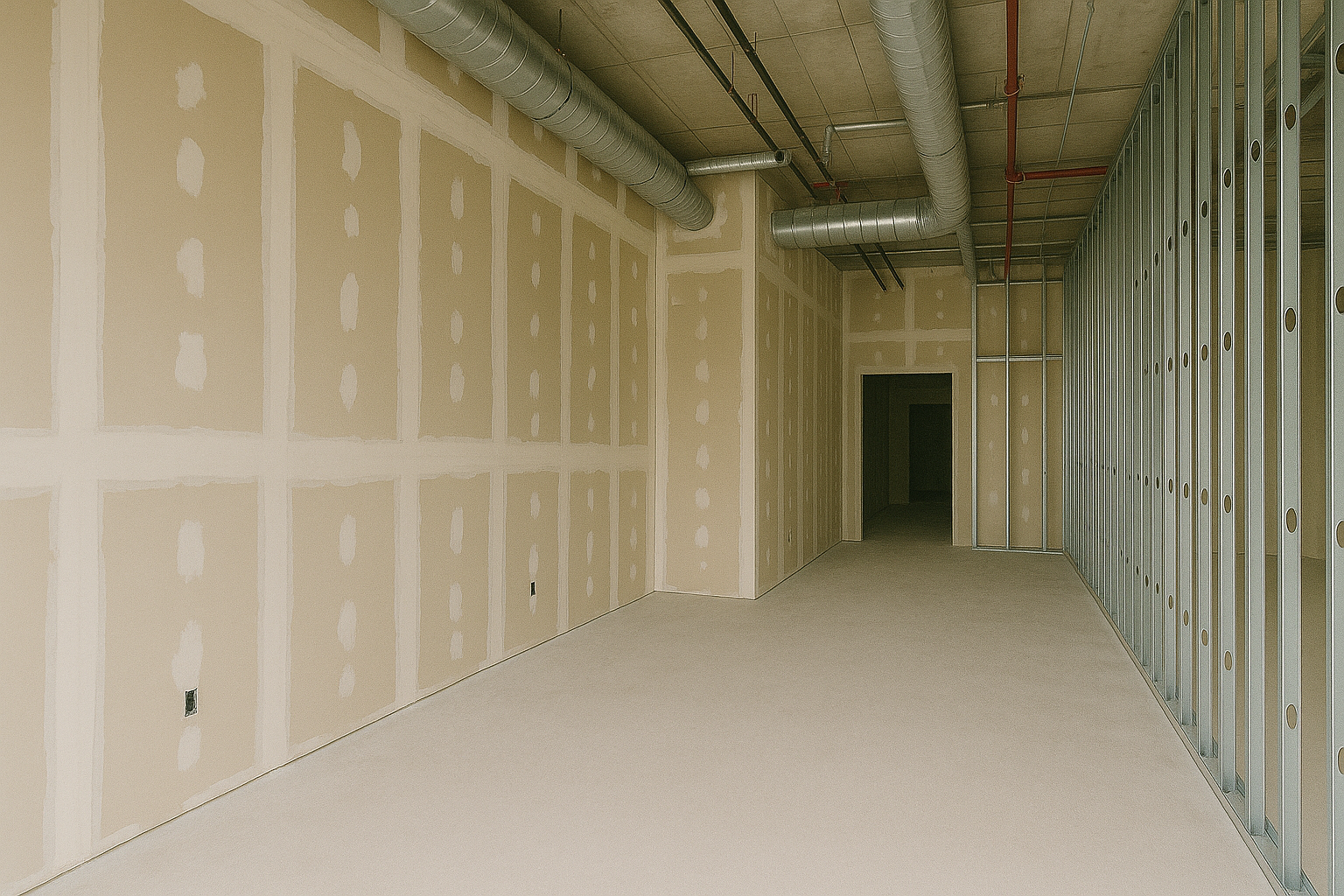
In drywall construction, wall placement isn’t determined solely by design intent—it’s shaped by the hidden dynamics of coordination zones. For architects, engineers, and general contractors, overlooking these zones during estimating can lead to significant cost discrepancies and project delays. Understanding how coordination zones influence wall layouts and their associated costs is key to accurate budgeting, efficient field execution, and design feasibility.
Coordination zones refer to the spatial areas allocated for various building systems—such as mechanical, electrical, plumbing (MEP), and structural elements—where components must be routed, aligned, or adjusted to avoid clashes. In high-density vertical construction, especially hospitals, labs, and data centers, these zones become increasingly complex and constrained.
Wall placement isn't always flexible—especially when mechanical or structural constraints dictate clearances and spacing. Adjusting wall layouts to avoid conflicts may result in:
Failure to consider these impacts early often results in drywall crews standing by while other trades resolve field issues—burning labor hours and jeopardizing schedule milestones.
Accurate drywall estimating must account for trade density and complexity in coordination zones. This is where Active Estimating plays a critical role. It transforms raw model and drawing data into actionable cost feedback that factors in the real-world dynamics of coordination.
In spaces like shafts and above-ceiling plenums, labor productivity drops significantly. Workers must build in confined areas, often during off-hours, around other trades. Drywall assemblies in these zones carry higher risk and cost.
Using drywall estimating tools that allow for subjective labor input—based on field knowledge and previous jobs—ensures that cost estimates reflect realistic production rates.
Estimators who proactively identify and price coordination challenges earn credibility with clients and protect project margins. When designs evolve and model updates come in, platforms like Active Estimating allow teams to instantly compare versions and isolate new coordination risks. This agility improves preconstruction dialogue and reduces the likelihood of change orders.
Coordination zones aren’t just a field issue—they’re a preconstruction reality. Drywall scope influenced by other trades must be surfaced, priced, and communicated early. Transparent cost assumptions, visual overlays, and continuous version tracking ensure the estimating process reflects both design and constructability. Estimators who master the impact of coordination zones don’t just chase cost accuracy—they lead project predictability.
Contact Information:
Active Estimating
508 2nd Street, Suite 208
Davis
California
95616
Rich Schoener
richard@activeestimating.com
(877)
Schedule a personalized demo to see how Active Estimating can work for your specific needs.
